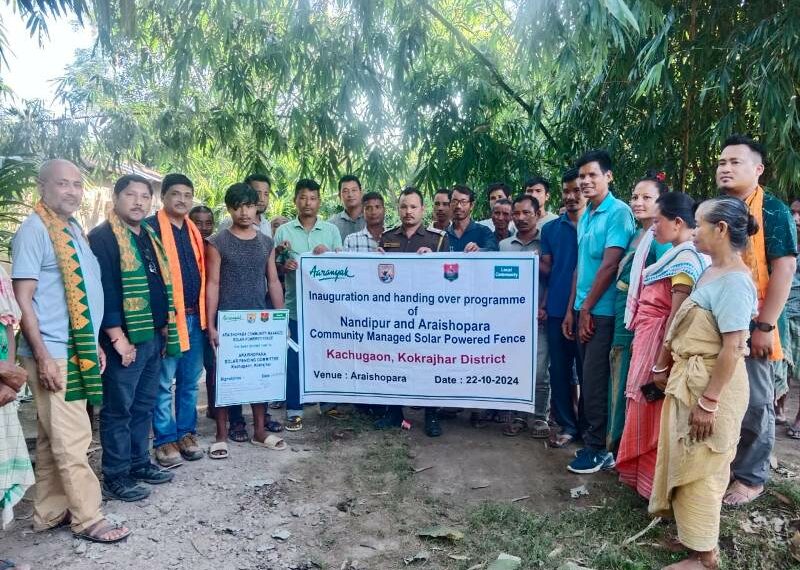Guwahati: In a significant step towards mitigating human-elephant conflict
(HEC), biodiversity conservation organization Aaranyak has installed a total of 10.55 kilometers of community-managed solar fence in two locations near Raimona in Assam’s Kokrajhar district.
This initiative aims to facilitate peaceful coexistence between humans and elephants by deterring elephants from entering areas of human habitation and agricultural land.
The fence has been implemented in two phases under a project sponsored by the US Fish and Wildlife Service in collaboration with the Forest Department and the local community.
One portion of the solar fence, spanning approximately 4 kilometers, covers six villages. The second part, covering 11 villages predominantly inhabited by the indigenous Bodo tribe, extends over 6.55 kilometers.
The local community played a crucial role by providing fence posts and labour during the installation of both stretches of the solar-powered fence, which aims to protect their crops and property.
Both the stretches of solar fence were formally inaugurated and handed over to the community-based solar fence management committees of both areas on October 22.
Forest official of Central Range of Raimona National Park Daisa Daimary and VCDC chairman Binoy Basumatary formally inaugurated the fence at Araishopara village.
The two stretches of solar fence were handed over to the local community and respective solar fence committees after signing of an MoU among Forest Department, Aaranyak and local community.
The headman of Araishopara village Pranjit Basumatary took the lead in organizing the fence inauguration programme that was attended by over 50 persons from Araishopara and nearby villages.
ALSO READ: Villages in Assam’s Goalpara dist get solar fence to combat human-elephant conflict
It’s worth noting that the direct current (DC) electricity powering the solar fence, designed to mitigate human-elephant conflict, is not lethal. This DC current is generated by a solar-charged battery.















